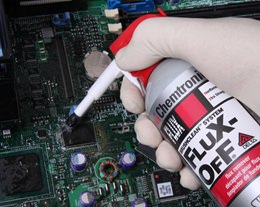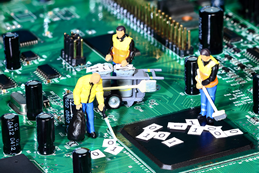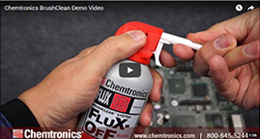Flux-Off CZ
Non-ozone depleting, nonflammable flux remover spray safe for use on plastics.
Flux-Off® CZ Flux Remover is a highly effective cleaner for removing rosin-based fluxes from electronic components and assemblies. Utilizing Cirozane™, which is based on new HFE technology, this nonflammable, non-ozone depleting aerosol quickly removes flux without harming sensitive materials.
CIROZANE™ Cleaning Chemistry (CZ) - Now, with CIROZANE CFC / HCFC Replacement chemistry, you won’t need to make any more undesirable trade-offs. CIROZANE-based products offer you a high performance, ultra-safe “drop-in” replacement to all CFC and HCFC chemistries.
CIROZANE chemistry is the result of an 18-month research effort. CIROZANE-based products offer all the performance of CFCs and HCFCs without any ozone depleting compounds.
Available with The BrushClean™ System - Gentle scrubbing action of a brush combined with high performance flux remover. Click here for more information.
Features & Benefits
- Safe on plastics
- Nonflammable
- Cleans R, RMA, RA, and no-clean flux
- Dries fast
- Leaves no residue
- All-Way Spray valve - even sprays upside down
- Available with BrushClean™ System
Applications
- The best “no worry” flux remover
- Ideal for replacing ozone depleting chemistries
| TDS | |
| REGS | |
| SDS | |
| Categories |
| Shelf Life | 5 yrs. |
|---|---|
| Harmonization Code | 3814 |
| Specifications | Unison Ind. 74-11-12-940-801-A Used to clean components |
| Call-outs | Boeing - 74-11-01-200-801-F00 Boeing - 74-11-01-210-006-F00 Boeing - 74-21-02-400-801-F00 Boeing - 74-21-02-210-007-F00 |
| NSN | ES7200 - 6850-01-436-4578 ES7201 - 6850-01-436-4579 |




